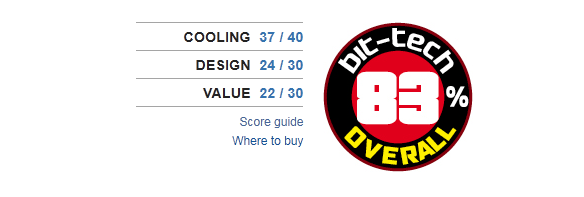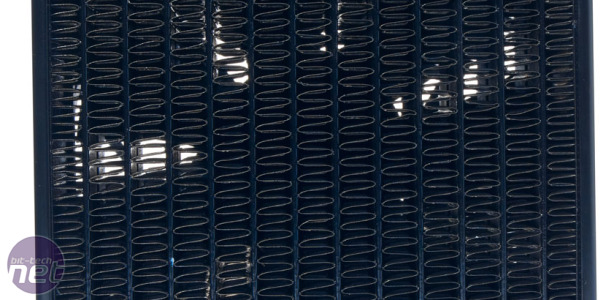
Performance
At high speed, the H80 was the joint-best performer on all our test rigs, despite not being as loud as the Antec Kühler H20 920 in our LGA1155 and AM3+ systems. It also performed well at low speed in the LGA1155 test rig, with temperatures rising by just 5˚C. Our AMD system is far more demanding, however, and at low speed the H80 only just managed to tame our overclocked FX CPU. As the H80 acts as an intake, the graphics card on our AMD test machine also ran noticeably hotter than with any of the other coolers fitted.While its fans are very quiet at the lowest fan speed setting, however, the H80 was still 3˚C cooler than the Be Quiet! Dark Rock Pro in our LGA2011 system. Switching the fans to their noticeably louder medium speed also improved performance significantly, with a delta T of 52˚C – an excellent result. The noisy highest fan speed saw diminishing returns, though, with a delta T of 51˚C - just 1˚C cooler.
Conclusion
We have concerns about using the Corsair H80 as an air intake unless you have at least one other fan acting as an exhaust. This is especially true if your CPU is heavily overclocked, but we can’t deny that the H80 is simple to install and use, can be very quiet and offers superb cooling.
Click to enlarge
The H80’s medium fan setting provides the best balance of cooling and noise, and has the potential to handle a heavy overclock. While you’ll probably need to tweak the cooling layout of your case to set up the H80 as an intake, its superb cooling, easy installation and sub-£70 price make it a solid choice for those looking for that little bit extra when it comes to cooling. For Socket AM3+ and LGA1155 owners, Antec's Kühler H20 920 costs and performs the same and has the benefit of software fan control making it the better buy. Seeing as the Kühler H20 920 isn't compatible with LGA2011 yet, however, the H80 makes a great choice for cooling toasty Sandy Bridge E CPUs.
LGA2011 Score


Socket AM3+ Score
-
Cooling37 / 40
-
Design24 / 30
-
Value22 / 30


MSI MPG Velox 100R Chassis Review
October 14 2021 | 15:04









Want to comment? Please log in.